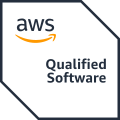The result? Disconnected teams, hindered business performance and ineffective use of talent as reported by Gartner, where only 1 in 10 organisations has a process for identifying and responding to strategic talent gaps that could affect them in the long term.
Welcome to the real cost of team planning without data. Let’s explore why relying on guesswork is holding your organisation back and how a data-driven approach can unlock your team's full potential.
Team Planning Without Data: The Gamble You Don’t Want to Take
For many companies, team planning can feel like solving a complex puzzle with missing pieces. Without clear data, organisations are left to speculate about skill gaps, employee availability, and how to align their people with business needs. This approach might have worked in the past, but today’s rapidly changing environment demands a more precise, data-driven strategy.
Simply put, not utilising holistic workforce data insights puts your business at risk of poor decision-making, misaligned teams, and reduced agility.
Here are the key areas where the absence of data-informed workforce planning can hurt your enterprise:
1. Inefficient Resource Allocation: Wasted Time, Wasted Talent
Picture this: You’ve got teams working overtime on low-priority projects while high-impact initiatives remain under-resourced. It’s a common problem when workforce planning isn’t guided by data. Without a clear view of team capacity, skills availability, and project priorities, businesses often overstaff certain pieces of work while leaving critical initiatives under-resourced.
According to Harvard Business Review, between 81-95% of employees around the world serve on multiple teams, making it very difficult for employees to effectively fulfil all of their roles, increasing their stress and role overload.
With a data-driven approach, you can match the right people to the right tasks, ensuring that high-priority projects receive the attention they need, while low-impact activities are appropriately allocated.
2. Lack of Agility: Slow to Adapt, Slow to Succeed
Today’s business environment is constantly changing, and staying competitive means being able to adapt quickly. Whether it’s shifting market demands, technological advancements, or customer expectations, businesses that can’t respond swiftly are left behind.
Organisations without data-driven workforce planning are less agile, often reacting too slowly to change. Without real-time insights, these businesses can’t quickly reassign resources, adjust team structures, or pivot their strategy. Companies using data to guide their decisions, on the other hand, are 162% more likely to react quickly to market changes, according to Forrester.
Agility is key to staying ahead, and without data, you risk being left in the dust.
3. Reduced Employee Engagement and Retention: A Recipe for High Turnover
Data doesn’t just help with operational efficiency—it’s critical for understanding your workforce on a human level. Without data, it’s nearly impossible to get a clear picture of what your employees need, how engaged they are, or where they’re likely to thrive.
A lack of data-driven insights means managers often overlook key drivers of employee satisfaction, such as skill development, finding purpose in their work, and feeling empowered to do valuable work. According to research by Gartner HR, 70% of employees don’t feel as engaged as they should be and aren’t feeling a meaningful connection to their job.
By using data to understand your workforce better, you can create a healthier work environment, improve engagement, and keep your top talent happy.
4. Missed Opportunities for Innovation: The Cost of Playing It Safe
Innovation doesn’t happen by accident. It requires the right people, the right skills, and the right environment. When workforce planning is based on guesswork, organisations often miss opportunities to innovate because they don’t have the insights needed to spot trends, identify emerging skills, or optimise team composition for creativity.
McKinsey research shows that companies using data and analytics are 19 times more likely to achieve above-average profitability and growth. Without data, businesses risk falling into a reactive cycle, focusing on immediate needs instead of proactively planning for future opportunities.
Data-informed workforce planning allows you to anticipate trends, align talent with future needs, and create the conditions for innovation to thrive.
The Solution?
Stop Guessing and Start Planning with Data
At TeamForm, we believe workforce planning should be informed by real-time, actionable data—because you can’t afford to rely on guesswork. By leveraging data from across your organisation, you can see exactly who's on what team, how each team connects to strategy, where your skills gaps are, identify talent that can be better utilised, and ensure that your workforce is aligned with your strategic goals.
A data-driven approach helps you optimise resource allocation, increase agility, boost employee engagement, and unlock opportunities for growth and innovation. With the right data, you can create a workforce plan that is flexible, responsive, and ready to take on whatever the future holds.
Ready to Unlock Your Workforce’s Potential?
Your teams are your most valuable asset—don’t leave their connection to strategy and work to chance. At TeamForm, we’re here to help you harness the power of data to support you in creating a workforce planning process that’s tailored to your business needs. Are you ready to turn workforce planning into your competitive edge?
















